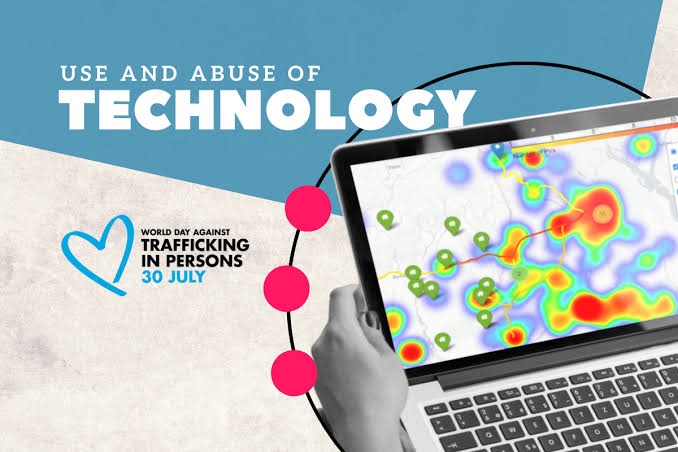Human trafficking is still a major global human rights problem in 2025. Even with more awareness, it continues secretly, exploiting millions for forced work, sexual abuse, and other illegal activities. Traffickers use new technologies like encrypted apps, social media, and the dark web to find victims and avoid the police. But now, governments, NGOs, and tech companies are using these technologies too to fight trafficking in new and better ways.
From artificial intelligence to blockchain, the role of technology in addressing human trafficking has grown significantly. These tools not only improve detection and investigation efforts but also enhance victim support systems, promote transparency in supply chains, and allow for more data-driven policy decisions. As of July 2025, technological interventions are playing a crucial role in disrupting trafficking networks and preventing new victims from falling prey to exploitation.
Using Artificial Intelligence for Detection
Artificial intelligence (AI) is one of the most powerful tools currently being used to identify and combat human trafficking. AI algorithms can analyze vast datasets to detect patterns indicative of trafficking behavior, such as repeated travel patterns, suspicious financial transactions, or abnormal online activity. For example, AI can help law enforcement identify fake job advertisements that are often used to lure victims into exploitative situations.
Machine learning tools are also being used to scan online advertisements on escort websites and forums where traffickers post listings. These systems flag content that matches known indicators of trafficking, such as certain language patterns, pricing structures, or images that have been reused or altered. Organizations like Thorn and the Polaris Project have implemented such systems to support investigations and connect potential victims with services.
As AI tools improve in contextual understanding and multilingual capabilities, they are increasingly useful in global operations where traffickers operate across borders and in multiple languages. By speeding up detection and analysis, AI reduces the time it takes to act on leads and initiate interventions.
Blockchain for Transparent Supply Chains
One of the key ways trafficking persists is through forced labor hidden in supply chains. Consumers and companies often do not know whether the goods they buy—such as clothing, electronics, or seafood—have been produced using exploitative labor. Blockchain technology, with its decentralized and immutable nature, is being employed to address this challenge.
Blockchain can track the origin and journey of a product from its raw material source to the end-user. This allows companies to verify that each step of their supply chain is free from forced labor and compliant with ethical labor standards. As of mid-2025, several multinational brands have adopted blockchain solutions to map their supply networks and certify ethical sourcing practices.
In some pilot programs, workers in vulnerable sectors are also given digital identities linked to blockchain platforms. These digital IDs protect them from contract substitution and wage theft by providing verified records of their employment terms and payment history. This transparency deters traffickers who rely on anonymity and undocumented labor to exploit workers.
Data Analytics and Predictive Modeling
Another critical technological advancement in the fight against trafficking is the use of data analytics and predictive modeling. Governments and NGOs now rely on aggregated data to map trafficking routes, identify hotspots, and anticipate future trends. Predictive models use past data to forecast where trafficking incidents are most likely to occur, allowing agencies to allocate resources more efficiently and act preemptively.
For instance, airport authorities use travel data to detect patterns such as last-minute bookings, one-way international travel, or flights with suspicious payment methods—often linked to trafficking. When flagged, these travelers can be approached by border agents trained to spot the signs of coercion or fear.
Hotspot mapping tools are also aiding humanitarian efforts. They allow frontline workers to focus their outreach in areas with high trafficking risks, such as refugee camps, post-disaster zones, and border regions where economic desperation is high. Through apps and geospatial software, information is shared securely among networks working to rescue and rehabilitate victims.
Social Media Monitoring and Awareness
Traffickers frequently use social media to recruit victims, often posing as modeling agents, job recruiters, or romantic partners. To counter this, law enforcement agencies are now employing technology to monitor social media platforms and detect grooming behaviors or suspicious accounts.
Advanced software tools analyze messages, friend connections, and posted content to identify predatory behavior. These tools can recognize when traffickers use specific hashtags, location tags, or targeted advertisements. Meta (formerly Facebook), TikTok, and X (formerly Twitter) have all increased their collaborations with anti-trafficking organizations to report, remove, and investigate trafficking-related content.
Social media is also an essential tool for spreading awareness. Influencers and advocacy groups use these platforms to educate the public on signs of trafficking, encourage reporting, and share survivor stories. As digital literacy improves globally, more users are able to recognize and resist online recruitment tactics, particularly among youth who are disproportionately at risk.
Mobile Technology and Victim Support
Mobile technology is providing critical support to survivors and at-risk individuals. Mobile apps now offer discreet ways for victims to report abuse, request help, or access information about their rights. For instance, some apps are designed with panic buttons or hidden functions that send alerts to local support centers without tipping off traffickers.
In many countries, multilingual apps provide information on how to access shelters, legal services, and counseling. These platforms use GPS services to help direct victims to the nearest assistance location, even in remote areas. In some areas, mobile payment systems have also been used to distribute financial aid to survivors who are rebuilding their lives.
Furthermore, training modules delivered via smartphones help educate workers on their rights, legal protections, and safe employment practices. This is especially important in industries like domestic work or agriculture, where isolation and language barriers can make individuals more vulnerable to exploitation.
Limitations and Ethical Concerns
While technology has introduced significant progress, it is not without limitations. AI tools require quality data, which is often lacking in regions with weak infrastructure or limited reporting mechanisms. Additionally, overreliance on surveillance technology raises concerns about privacy, especially when monitoring social media or personal data.
There is also the risk that poorly designed technology could misidentify individuals or over-police certain communities, causing harm to innocent people. It’s essential that anti-trafficking technologies are developed with input from affected communities, legal experts, and human rights advocates to ensure they do not inadvertently cause more harm than good.
Furthermore, traffickers themselves are becoming more tech-savvy, using encrypted messaging apps and cryptocurrency to avoid detection. This means that counter-tech solutions must constantly evolve to stay ahead.
Conclusion
The role of technology in addressing human trafficking has grown exponentially in recent years, providing vital tools for detection, prevention, and survivor support. From AI and blockchain to data analytics and mobile apps, these innovations offer hope in the fight against a deeply entrenched global crime.
However, technology alone cannot solve human trafficking. It must be combined with strong legal frameworks, public awareness, and coordinated international action. As of July 2025, the most successful anti-trafficking initiatives are those that integrate tech solutions with compassionate, community-based approaches. The fight is far from over, but with continued innovation and collaboration, the future holds the promise of a world where trafficking can no longer hide in the shadows.



